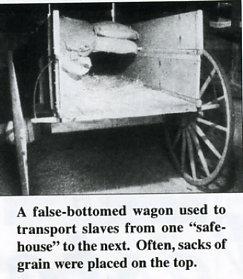
Click Here to Return to Milestones
The great social movements of the nineteenth
century changed the character of this nation. Among these movements
were abolition, women's suffrage, temperance, improved labor conditions,
cooperative communities (association), educational and prison
reform.
Of these the most dramatically successful in that century was
the effort to free the slaves. Antislavery organizations provided
lecturers such as William Lloyd Garrison, Abby Kelley, Stephen
S. Foster, Frederick Douglass, Charles Lenox Remond, and Wendel
Phillips.
The importation of slaves from Africa to the United States had
become illegal in 1808. The invention of the cotton gin in 1793
by Eli Whitney increased production tenfold and thus the need
of more slaves. The number of slaves increased from about 1.5
million in 1820 to more than 2 million or almost one-sixth of
the population in this country by 1830. At the same time there
was a free black population numbering about 320,000 by the end
of the 1820s. Three-quarters of the world's cotton was produced
in the South by slave labor in 1860. Cotton and the attendant
cotton mills in the North were the driving forces of slavery.
At this time a cotton mill was operating in Beaver Falls.
In the earlier years of the movement the abolitionists believed
that the churches as well as respectable and influential people
and leaders of communities would support them in the North and
shame the South into abolishing slavery, and they suffered intense
disillusionment when this help did not materialize. Not only did
the church, businessmen, and other leaders refuse to support the
cause in any way, but they opposed it vigorously. Opposition to
the antislavery movement became violent.

In the 1830s much of this violence, especially the well orchestrated
riots against the antislavery press and leaders, spread across
the northern states as its organizers sought to destroy printing
presses that supported the movement and to intimidate free blacks.
The leaders and organizers of these riots were the very people
from whom the abolitionists had expected support, such respected
citizens as lawyers, bankers, doctors, and political leaders from
both parties.
In 1835 introduction of the steam press and other new technology
decreased the cost of publication and made greater volume possible,
enabling abolitionist newspaper editors, writers, and lecturers
to take advantage of mass communication. That year the Anti-Slavery
Society was able to distribute 1.1 million pieces of literature
in contrast to 122,000 the previous year. One result was that
antislavery societies in the United States increased from about
200 in 1835 to 527 in 1836.
In 1850 the Fugitive Slave Law, which required federal agents
to find escaped slaves in the North and return them to their Southern
owners, was passed. It provided a penalty of $1,000 to anyone
aiding in a slave's escape. As a result Federal agents kidnaped
blacks who appeared in the streets of Northern cities. Bounty
hunting became a lucrative business. Those actively involved in
helping runaway slaves were forced into civil disobedience in
defiance of this law.
There is an interesting local story of a fugitive slave living
in Beaver County. Mr. Richard Gardner(aka Woodson), formerly owned
by Rhoda B. Byers of Louisville, Kentucky, settled in Beaver and
lived there for two years. Gardner, a well-respected black man,
built a house in Beaver and was preaching to a Methodist congregation.
He and his wife would walk to Bridgewater to the hotels at the
steamboat landings to pick up laundry.
He was lured one day to a landing where he was arrested by a federal
agent and two residents of Beaver. He was not allowed to say farewell
to his family but was taken to a boat waiting on the Ohio River
and taken to Pittsburgh for trial. There he was tried, found guilty
of being a fugitive slave, and returned to Rhoda Byers.
Citizens of Beaver were so outraged by these acts that they started
a fund to buy his freedom. It took $600 and two years to bring
Mr. Woodson back to his family. He returned to Beaver in 1851
and lived a free man until his death in 1876.
Abolitionists pointed out to all who would listen or read that
slavery was a moral problem. This viewpoint increasingly found
its way into the consciousness and consciences of many who listened
to antislavery speakers, read their publications, and discussed
the issue with family and friends. In 1850 such awareness was
also helped forward by the enormity of the Fugitive Slave Law.
The movement grew.
The name, Underground Railroad, is itself deceptive. It was neither
underground (with some exceptions), nor was it a railroad. The
name alluded to the clandestine arrangement made by those who
helped slaves escape from the South to freedom in Canada.